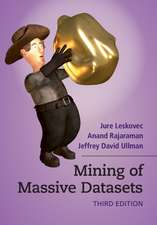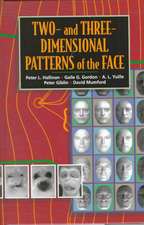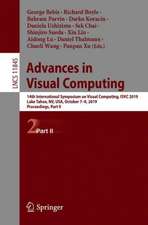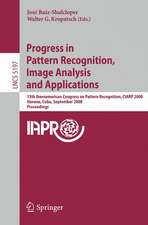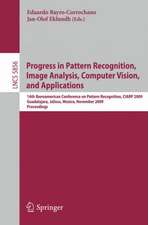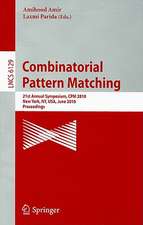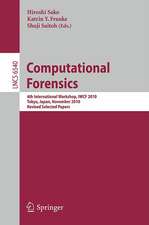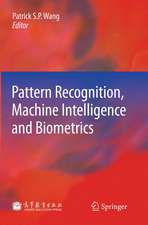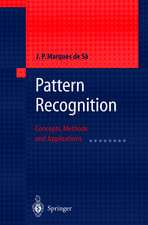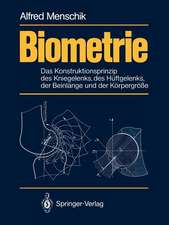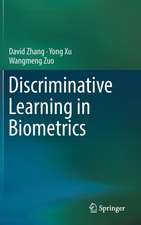Computational Models of Rhythm and Meter
Autor Georg Boennen Limba Engleză Hardback – 9 iul 2018
Computational Models of Rhythm and Meter also contains numerous investigations into the timing structures of human rhythm and metre perception carried out within the last decade. Our solution to the transcription problem has been tested using a wide range of musical styles, and in particular using two recordings of J.S. Bach's Goldberg Variations by Glenn Gould. The technology is capable of modelling musical rhythm and meter by using Farey Sequences, and by detecting duration classes in a windowed analysis, which also detects the underlying tempo. The outcomes represent human performances of music as accurate as possible within Western score notation.
| Toate formatele și edițiile | Preț | Express |
|---|---|---|
| Paperback (1) | 642.29 lei 38-44 zile | |
| Springer International Publishing – 14 feb 2019 | 642.29 lei 38-44 zile | |
| Hardback (1) | 761.62 lei 3-5 săpt. | |
| Springer International Publishing – 9 iul 2018 | 761.62 lei 3-5 săpt. |
Preț: 761.62 lei
Preț vechi: 952.02 lei
-20% Nou
Puncte Express: 1142
Preț estimativ în valută:
145.76€ • 151.61$ • 120.33£
145.76€ • 151.61$ • 120.33£
Carte disponibilă
Livrare economică 25 martie-08 aprilie
Preluare comenzi: 021 569.72.76
Specificații
ISBN-13: 9783319762845
ISBN-10: 3319762842
Pagini: 192
Ilustrații: XII, 187 p. 47 illus., 3 illus. in color.
Dimensiuni: 155 x 235 mm
Greutate: 0.48 kg
Ediția:1st ed. 2018
Editura: Springer International Publishing
Colecția Springer
Locul publicării:Cham, Switzerland
ISBN-10: 3319762842
Pagini: 192
Ilustrații: XII, 187 p. 47 illus., 3 illus. in color.
Dimensiuni: 155 x 235 mm
Greutate: 0.48 kg
Ediția:1st ed. 2018
Editura: Springer International Publishing
Colecția Springer
Locul publicării:Cham, Switzerland
Cuprins
Preface.-Introduction.- Phenomenology of Rhythm and Meter.- A Shorthand Notation for Musical Rhythm.- Partitions and Musical Sentences.- The Use of the Burrows-Wheeler Transform for Analysis and Composition.- Christoffel Rhythms.- The Farey Sequence as a Model for Musical Rhythm and Meter.- Introduction to Quantization.- Rhythm Quantization.- Future Work.- Conclusion.- References.
Textul de pe ultima copertă
This book presents the latest computational models of rhythm and meter that are based on number theory, combinatorics and pattern matching. Two computational models of rhythm and meter are evaluated: The first one explores a relatively new field in Mathematics, namely Combinatorics on Words, specifically Christoffel Words and the Burrows-Wheeler Transform, together with integer partitions. The second model uses filtered Farey Sequences in combination with specific weights that are assigned to inter-onset ratios. This work is assessed within the context of the current state of the art of tempo tracking and computational music transcription. Furthermore, the author discusses various representations of musical rhythm, which lead to the development of a new shorthand notation that will be useful for musicologists and composers.
Computational Models of Rhythm and Meter also contains numerous investigations into the timing structures of human rhythm and metre perception carried out within the last decade. Our solution to the transcription problem has been tested using a wide range of musical styles, and in particular using two recordings of J.S. Bach's Goldberg Variations by Glenn Gould. The technology is capable of modelling musical rhythm and meter by using Farey Sequences, and by detecting duration classes in a windowed analysis, which also detects the underlying tempo. The outcomes represent human performances of music as accurate as possible within Western score notation.
Computational Models of Rhythm and Meter also contains numerous investigations into the timing structures of human rhythm and metre perception carried out within the last decade. Our solution to the transcription problem has been tested using a wide range of musical styles, and in particular using two recordings of J.S. Bach's Goldberg Variations by Glenn Gould. The technology is capable of modelling musical rhythm and meter by using Farey Sequences, and by detecting duration classes in a windowed analysis, which also detects the underlying tempo. The outcomes represent human performances of music as accurate as possible within Western score notation.
Caracteristici
Presents new methods for the composition, analysis and transcription of musical rhythms, meter and form Demonstrates a new process for the automated transcription of rhythms from musical performances Contains algorithms for the measurement of syncopation and metric grouping Discusses the nature of rhythm and musical form, their perception and their meaning Provides step-by-step guidance through all aspects of the analysis Offers a new shorthand notation for musical rhythm Evidence is provided through numerous illustrated real world examples of music transcriptions and rhythmic analysis based on human performances Includes links to the author’s open source code project chunking written in C++, which implements all the methods for rhythm analysis and composition presented in this book


